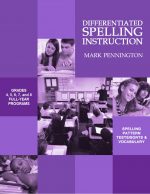The Plurals Spelling Rule
Changing singular nouns to plural nouns? It’s all about the endings. In English, the last letters or sounds of single common nouns (ideas, persons, places, or things) determine how we change those nouns into plurals.
The Plurals Spelling Rule
Spell plural nouns with an s (dog-dogs), even those that end in y (day-days) or those that end in a vowel, then an o (stereo-stereos). Spell “es” after the sounds of /s/, /x/, /z/, /ch/, or /sh/ (box-boxes) or after a consonant, then an o (potato-potatoes). Change the y to i and add “es” when the word ends in a consonant, then a y (ferry-ferries). Change the “fe” or “lf” ending to “ves” (knife-knives, shelf-shelves).
Exceptions
- Collective nouns are plurals by nature. Examples: people, committee
- Unchanging nouns are the same in both singular and plural forms. Examples: deer, fish
- Singular Latin nouns ending in “us” change the “us” to “i” for plurals. Examples: syllabus-syllabi, cactus-cacti
- Singular Latin nouns ending in “um” change the “um” to “a” for plurals. Examples: curriculum-curricula, datum-data
- Singular Latin nouns ending in “ix” or “ex” change the “ix” or “ex” to “i” for plurals. Examples: matrix-matrices, index-indices
- Singular Latin nouns ending in “is” change the “is” to “es” for plurals. Examples: analysis-analyses, crises-crises
- Plus many commonly used nouns… Examples: man-men, child-children
Check out the song! The Plurals Rule
(to the tune of “Mary Had a Little Lamb”)
1. If there is a vowel before the letters o or y,
Mary had a little lamb, little lamb, little lamb.
“Add an s onto the end and to most nouns,” said I.
Mary had a little lamb. Its fleece was white as snow.
2. If there is a consonant before the o or y,
And everywhere that Mary went, Mary went, Mary went.
“Add “e-s” onto the end, but change the y to i.”
Everywhere that Mary went the lamb was sure to go.
3. “Add “e-s” onto an x, to /ch/, /sh/, /s/, or z.
It followed her to school one day, school one day, school one day.
Also add onto an f, but change the f to v.”
It followed her to school one day, which was against the rules.
*****
I’m Mark Pennington, author of the full-year Differentiated Spelling Instruction programs for grades 4, 5, 6, 7, and 8. The grade-level programs include weekly tests, based upon conventional spelling rules and developmental spelling patterns, weekly spelling sorts, review games, and audio links to catchy spelling songs. Additionally, the comprehensive diagnostic spelling assessment (audio file included) tests spelling patterns from previous grade levels, and the corresponding worksheets allow you to pinpoint instruction according to individual needs. Each worksheet includes a formative assessment to help you determine whether students have mastered the spelling instruction. The program is simple to implement and doesn’t take up too many valuable instructional minutes. You do have other subjects to teach!
A Model Grades 3-8 Spelling Scope and Sequence
Preview the Grades 3-8 Spelling Scope and Sequence tied to the author’s comprehensive grades 3-8 Language Strand programs. The instructional scope and sequence includes grammar, usage, mechanics, spelling, and vocabulary. Teachers and district personnel are authorized to print and share this planning tool, with proper credit and/or citation. Why reinvent the wheel? Also check out my articles on Grammar Scope and Sequence, Mechanics Scope and Sequence, and Vocabulary Scope and Sequence.



